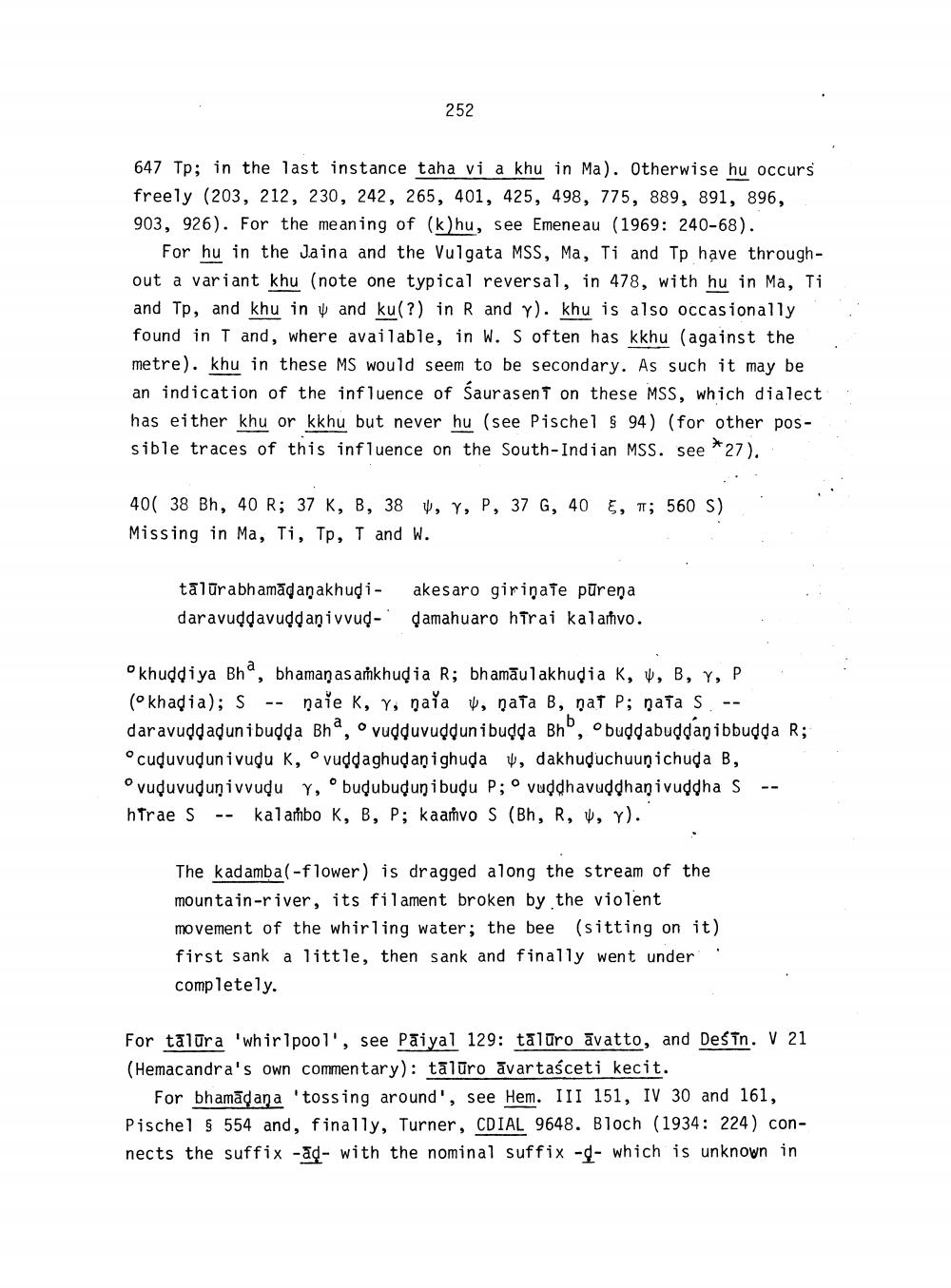________________
252
647 Tp; in the last instance taha vi a khu in Ma). Otherwise hu occurs freely (203, 212, 230, 242, 265, 401, 425, 498, 775, 889, 891, 896, 903, 926). For the meaning of (k)hu, see Emeneau (1969: 240-68).
For hu in the Jaina and the Vulgata MSS, Ma, Ti and Tp have throughout a variant khu (note one typical reversal, in 478, with hu in Ma, Ti and Tp, and khu in v and ku(?) in R and y). khu is also occasionally found in T and, where available, in W. S often has kkhu (against the metre). Khu in these MS would seem to be secondary. As such it may be an indication of the influence of Saurasent on these MSS, which dialect has either khu or kkhu but never hu (see Pischel & 94) (for other possible traces of this influence on the South Indian MSS. see *27).
40( 38 Bh, 40 R; 37 K, B, 38 V, V, P, 37 G, 405, IT; 560 S) Missing in Ma, Ti, Tp, T and W.
.
tālūrabh amādanakhudi- daravuddavuddanivvud-
akesaro girişate pūrena damahuaro hirai kalavo.
khuddiya Bha, bhamaņas ankhudia R; bh amāulakhudia K, M, B, Y, P ! (okhadia); S -- naie K, Y; naya , nata B, ņaf P; nata S. -- daravuddapun ibudda Bho, vudduvuddun ibudda Bh", "buddabuddan ibbudda R;
cuduvudun ivudu K, vuddaghudanighuda W, dakhuduchuuņichuda B, ovuduvudunivvudu Y, budubuduni budu P; ovuddhavuddhanivuddha S -- h Trae S -- kalambo K, B, P; kaavo S (Bh, R, W, Y).
The Kadamba ( -flower) is dragged along the stream of the mountain-river, its filament broken by the violent movement of the whirling water; the bee (sitting on it) first sank a little, then sank and finally went under completely.
For tālura 'whirlpool', see Pāiyal 129: tālāro āvatto, and Desin. V 21 (Hemacandra's own commentary): tālāro avartaśceti kecit.
For bhamāçana 'tossing around', see Hem. III 151, IV 30 and 161, Pischel S 554 and, finally, Turner, CDIAL 9648. Bloch (1934: 224) connects the suffix -ad- with the nominal suffix -- which is unknown in




